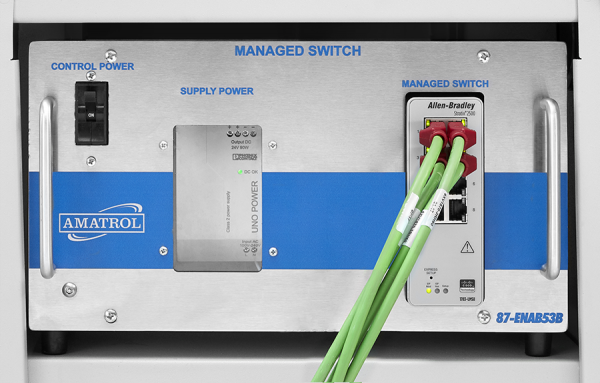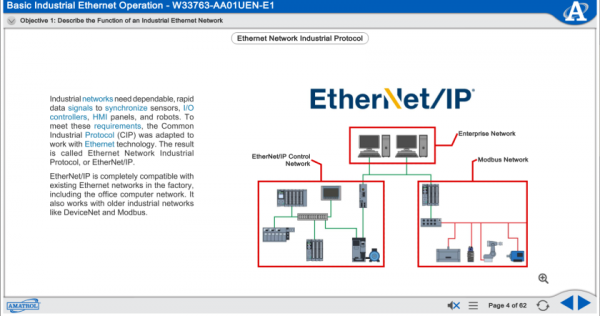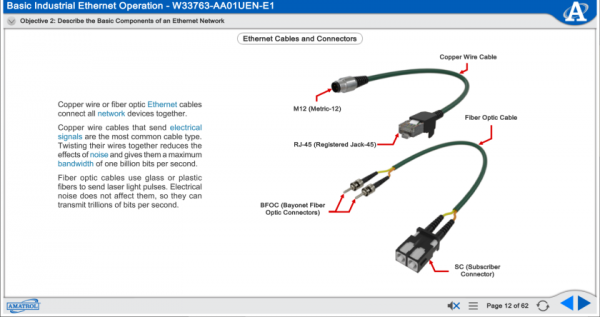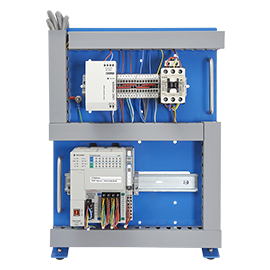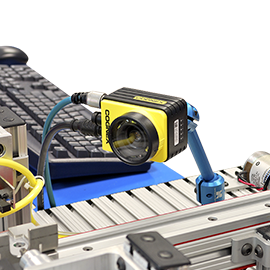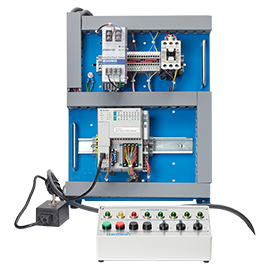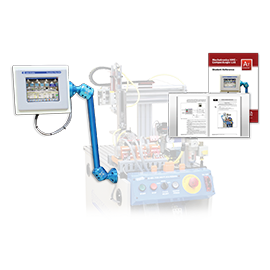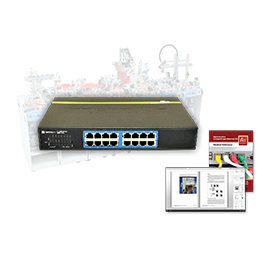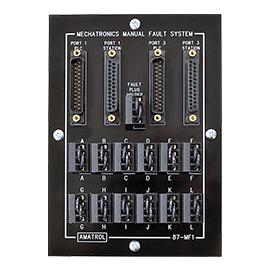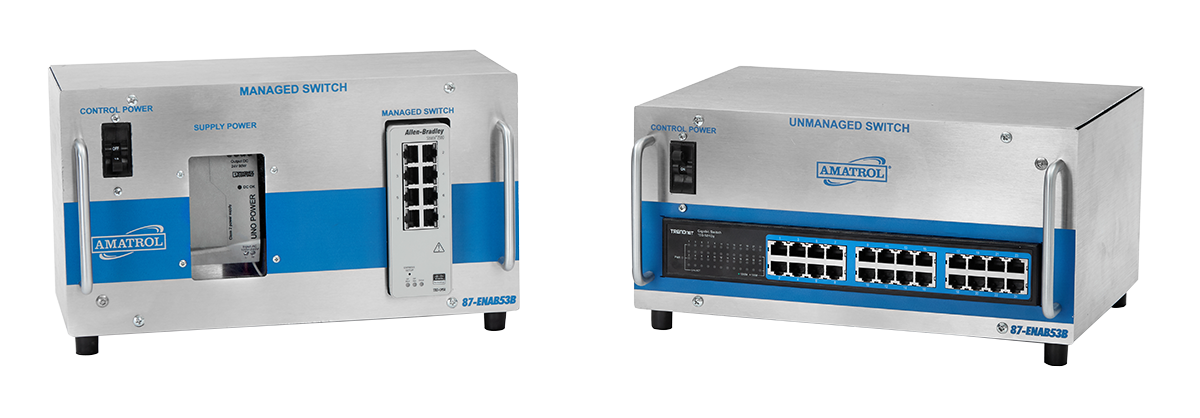
Additional Requirements
- Two (2) Mechatronics Learning Systems (870-AB53A or 870-S715)
- Two (2) Mechatronics Stations (87-MS series)
- Amatrol Smart Factory Start-Up Services (90-START4.2)
- Computer: See requirements
This system teaches Ethernet (Allen-Bradley) network communications between connected automated devices in a Smart Factory environment to efficiently control and monitor automated manufacturing processes.
The Smart Factory network communications training systems feature real-world equipment learners will encounter on the job, including both managed and unmanaged network switches. The systems combine hands-on skills practice with in-depth multimedia curriculum for a well-rounded learning experience that will prepare learners to make an immediate impact in the technologically-advanced Smart Factory environments of the present and future.


